
KPIs are an important way to track your performance as an SEO. They offer a method to help answer whether you are achieving the goals of your SEO strategy.
They’re crucial if you’re an SEO consultant or agency. When commissioned for a project, setting KPIs help to ensure the SEO activity aligns with the metrics that matter to the client.
This article identifies the KPIs you need to track, explains why they are essential, and details how to track them.
Let’s jump right in.
Short for Key Performance Indicators, KPIs are a way to evaluate the success of a particular activity.
When you communicate with your clients, KPIs allow you to highlight your progress and show your value based upon metrics critical to their business.
A business typically has an overall goal of conversion (email signup, phone call, sale, etc.), but this doesn’t mean conversion should be the only KPI.
You’ll also have other metrics to indicate your progress toward core business goals, like improving revenue.
The types of metrics are called "Soft KPI." Some of the goals within these metrics can be considered "micro conversions."
A great example of a soft KPI is improving clickthrough rates (CTRs). An improvement in CTR can cause an increase in traffic, which can then result in more conversions and revenue for the site, but it doesn’t make sense to have CTR as your main KPI for the client.
On the other hand, hard KPIs directly relate to the business’s primary goals, e.g., qualified leads, revenue, or affiliate link clicks.
Marketing teams and upper management tend to take hard KPIs a lot more seriously, and while you can deliver all the soft KPIs you like, clients will ask questions if you aren’t hitting hard KPIs.
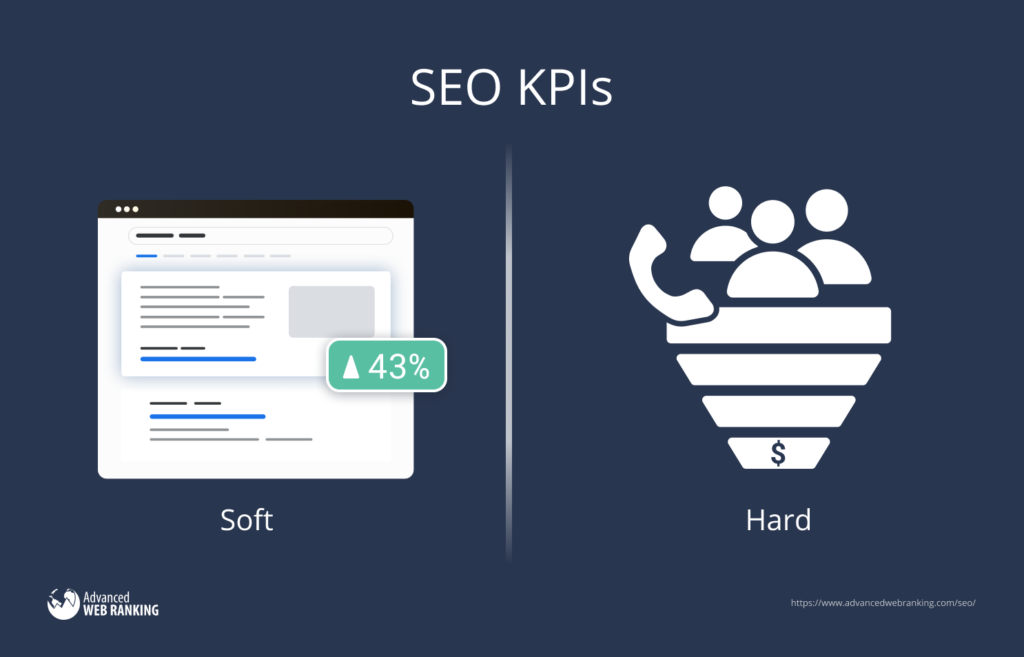
It’s essential to establish hard KPIs, although they’ll usually be the same across all businesses.
The following hard KPIs are what I deem critical to track. Hitting these tend to mean you’re generating revenue for the business, which is the core reason a brand has hired you.
An obvious KPI; after all, if the client is spending more than they’re making with you, at some point, they will end the project.
However, you can’t expect an instant ROI for SEO, unlike a well-executed PPC campaign. SEO is a longer-term investment but one that can pay off.
Setting when a client will start receiving an ROI is a challenging task, primarily due to a range of factors impacting SEO. Still, it’s a vital metric to track to ensure that SEO is an effective channel for the business.
ROI is calculated by taking the amount of additional revenue, subtracting the marketing costs, and then dividing by the marketing cost:
((Additional revenue - marketing costs)/marketing costs)
As an example, if a campaign generated an additional £100,000 over a year and the SEO retainer was £60,000 then it’d be:
((£100,000 - £60,000) / 60,000) * 100 = 67%
Defining additional revenue for SEO activity can be tricky. For example, if there was a ranking improvement, but search demand dropped, resulting in revenue being level with the previous year, you’ve still provided ROI for the client.
If they didn’t work with you, revenue would be down.
I’ve written previously on calculating the value of SEO, so I’d recommend starting there if you found yourself in this scenario.
Finding revenue figures is also not always easy. For an ecommerce site, you can find these revenue figures via Google Analytics. However, if customers don’t make a direct sale through the site, you’ll have to use sales tracking software the client may use, like HubSpot or Stripe.
Tracking the ROI from an SEO strategy is taking the value of the contract + any additional expenditure the client has had to implement your recommendations.
The main goal of almost every business is to generate revenue.
When running through your monthly SEO reports with your clients, your SEO activity breakdown won’t mean much if they’re not on the marketing team (think of the MDs/CEOs, etc.). Instead, they’re going to want to skip ahead and hear about the revenue your activity is generating.
How you track revenue depends on the type of site.
If it’s an ecommerce site, you can likely use Google Analytics. First, apply an organic traffic segment, then go to Conversions > Ecommerce > Overview via the left sidebar.
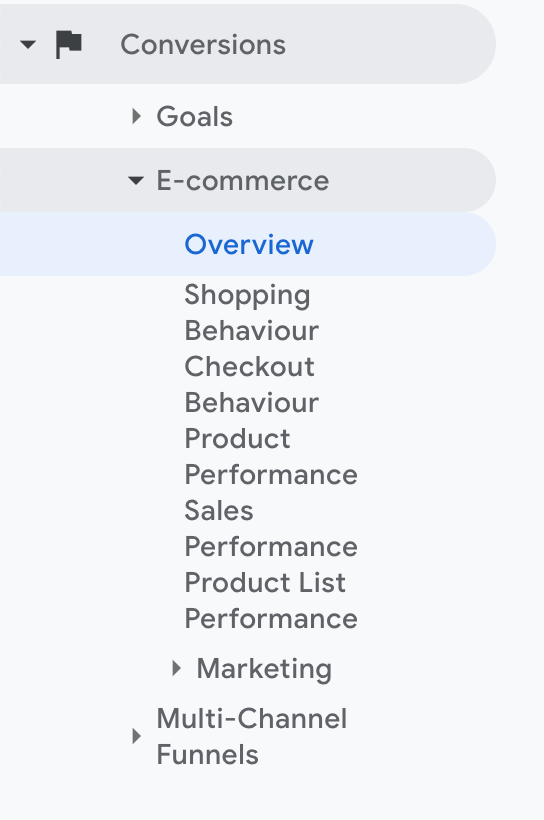
Then, simply view the data returned in the scorecards.

If a sales team closes the leads you generate for a client, you’ll need to access the CRM the sales team uses. Most CRM tools like Salesforce or HubSpot offer reporting on the number of closed deals by channel.
For example, HubSpot allows for custom reporting dashboards, so you’ll likely want to set one of these up so you can see additional revenue you’re generating.
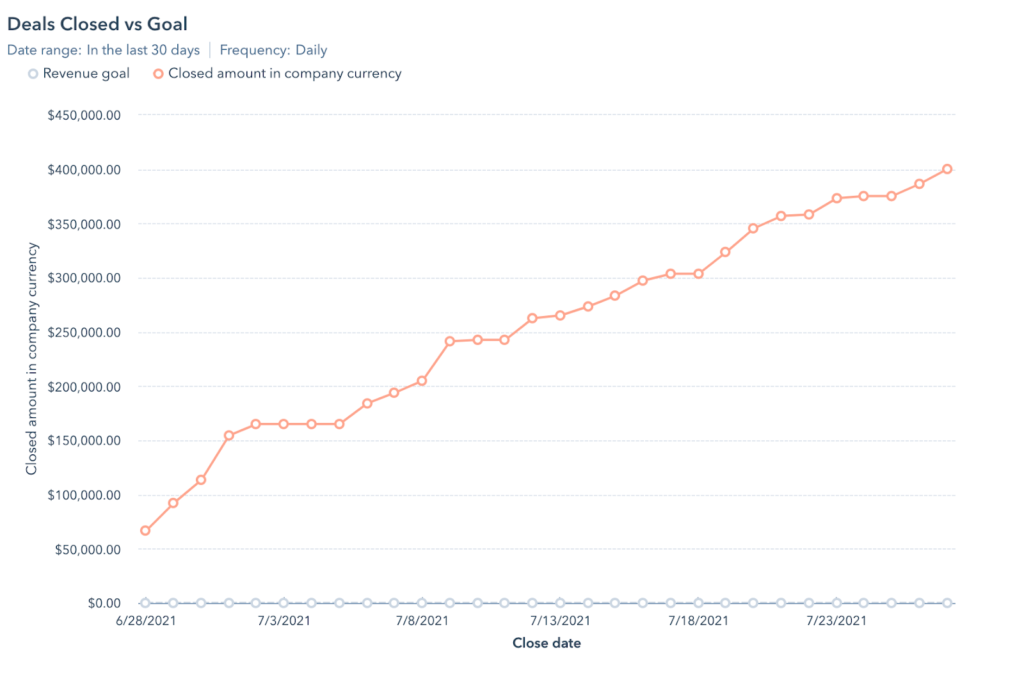
Be aware tracking revenue from SEO in these scenarios does require accurate attribution by the sales team. This opens attribution up to human error, and long sales cycles can make tracking harder.
Driving traffic to a site is excellent, but turning that traffic into conversions is usually the objective for most businesses. This is where you can show off your efforts.
You can track these metrics in the same dashboards as you track revenue.
Ecommerce sites can use the Conversions > Ecommerce > Overview report with an organic traffic segment I mentioned previously.

You’ll also see data on conversation rates and average order value alongside transaction data. These are useful soft KPIs but are more often used for merchandising or UX teams. Although, they can also be used by SEO’s to understand the quality of traffic sent from search engines.
If you’re tracking leads/conversions, head to the conversions section rather than ecommerce, e.g., Goals > Overview. You’ll get similar reports but just based upon the Google Analytics Goals you create.

Soft KPIs are a way to show your client early progress, even if the project isn’t providing ROI yet. Here are some examples of popular soft KPIs.
A Google Analytics session begins when someone lands on your site. Comparing the session trend over time validates that the SEO tactics you’re implementing are working, making it an important metric to track.
Sessions, however, aren't a hard KPI. An increase in organic sessions doesn’t necessarily mean you’re providing ROI for a client.
The job of an SEO isn’t just to drive traffic. It’s to drive the right types of traffic, meaning the kind of user who will convert and make a client money.
Still, sessions can indicate that the SEO strategy is working, as long as you also eventually hit hard KPIs.
Track sessions using Google Analytics by applying that organic traffic segment again, then going into the Audience tab on the left and selecting "Overview."

You’ll then see a variety of metrics, including sessions.

Tracking your organic visibility is a great way to show your client how the SEO work progresses. The main benefit of monitoring organic visibility is that tools calculate this metric based upon where you rank within a search result, which takes out any potential seasonality.
If your site sells Christmas ornaments, the number of sessions will decrease in January compared to December because fewer people are searching for your product. However, every other site competing for those keywords is also experiencing this lower search volume, so you can measure your progress relative to your competitors.
You can find situations where other metrics like sessions or conversions are down, but visibility has improved. This points toward you doing your job as an SEO well, as the site is ranking better, but likely that interest in your client’s offering has decreased, resulting in fewer users searching.
For me, this KPI is a handy one to track as it can help make more sense of your organic data.
Various tools provide a visibility metric, some vary in how they calculate it or collect the data in different ways, but they all help in the same way.
Advanced Web Ranking creates a visibility score based on your keywords in the rank tracker. You’ll see it charted over time in your SEO dashboard like the below.
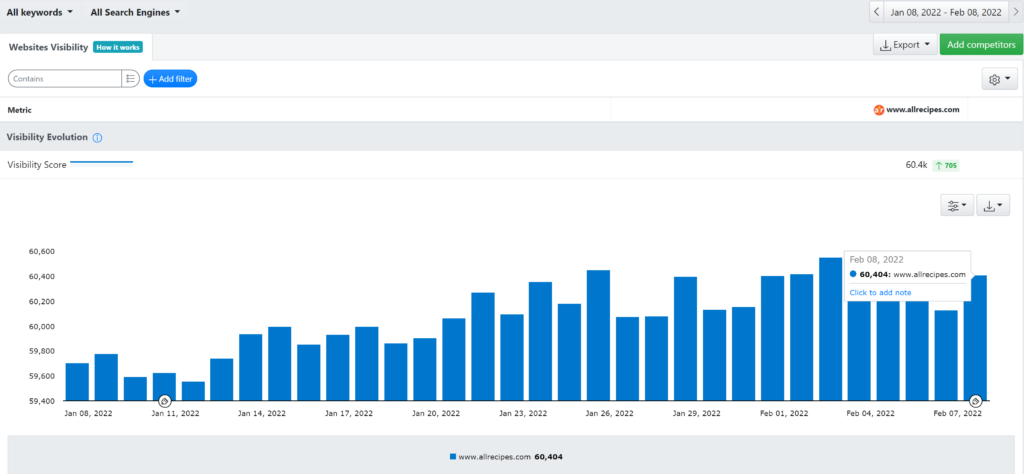
In addition to seeing your visibility, you can also see that of competing sites.
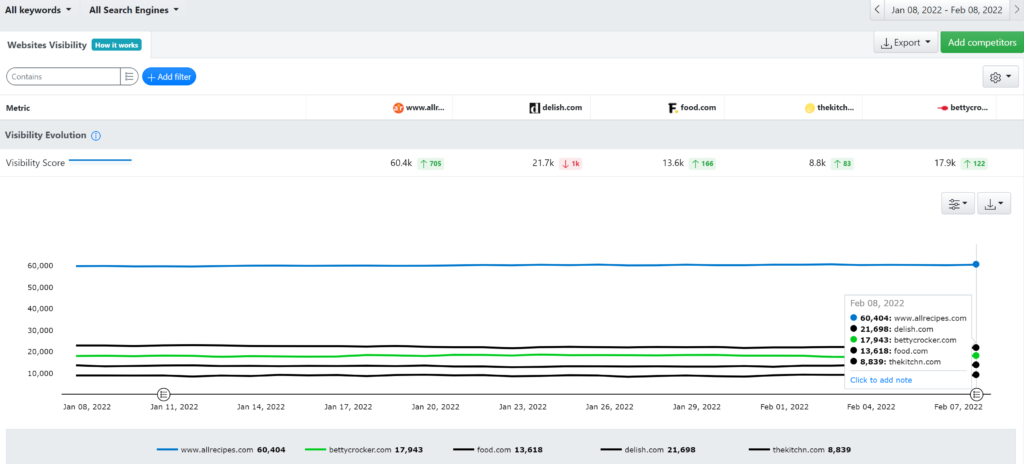
Other tools create visibility metrics also. One of note is Sistrix, which takes a slightly different approach where it’s calculated based upon a comprehensive pre-defined set of keywords you have no control over.
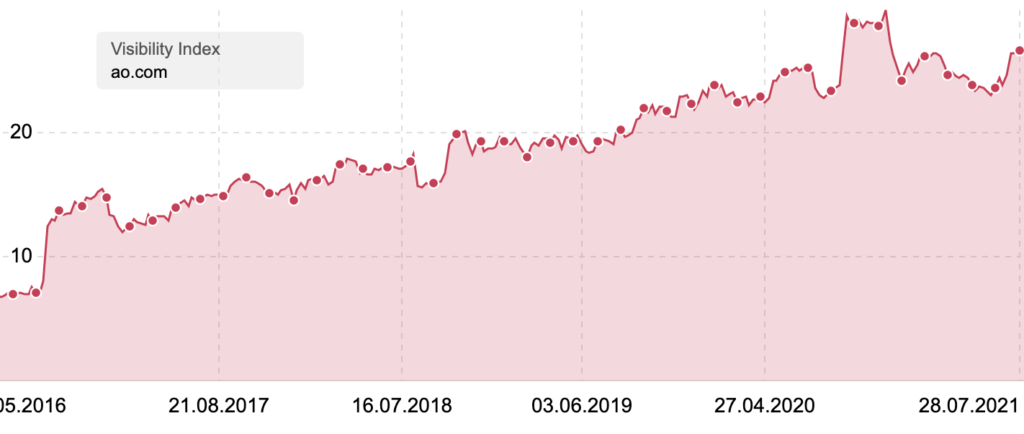
While the obvious downside to the way data is collected is that it might not include keywords you care about, the benefit is that you can see the visibility metric for any site on the web.
Branded organic traffic is usually down to the searcher's existing knowledge of the brand; they will search for a specific brand or product name. On the other hand, non-brand organic comes from a well-thought-out SEO strategy to rank for queries that are not specific to your brand or product.
Because of that, it’s important to distinguish between the two and ensure you report on non-brand traffic specifically.
While a non-brand SEO strategy can positively impact brand traffic, it isn’t its goal, nor is it easy to prove.
The best way to track this is to use Google Search Console performance data. Get to the report via the left sidebar, then add a query filter.
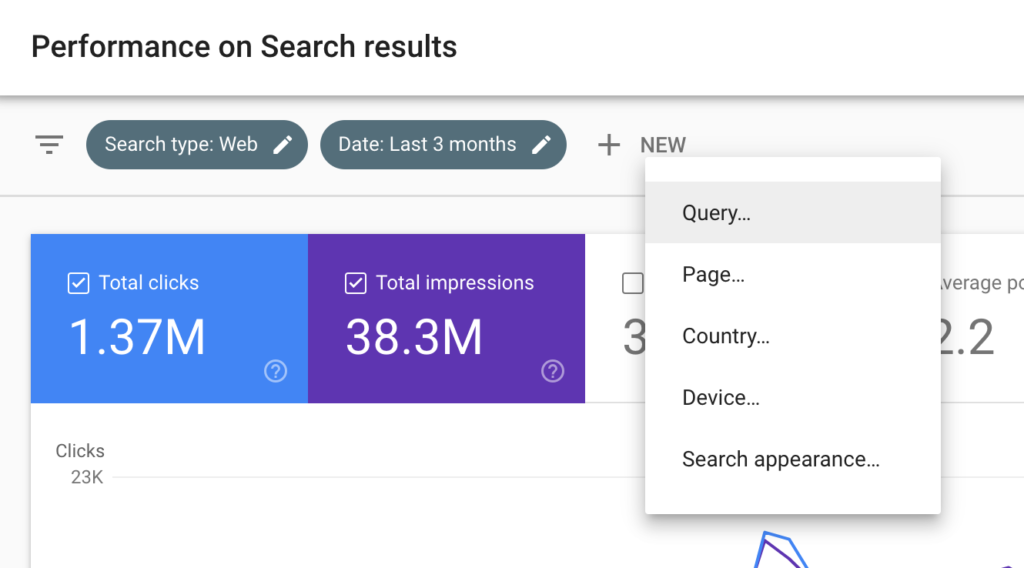
You can search for queries containing a word; simply enter your brand name or product names.
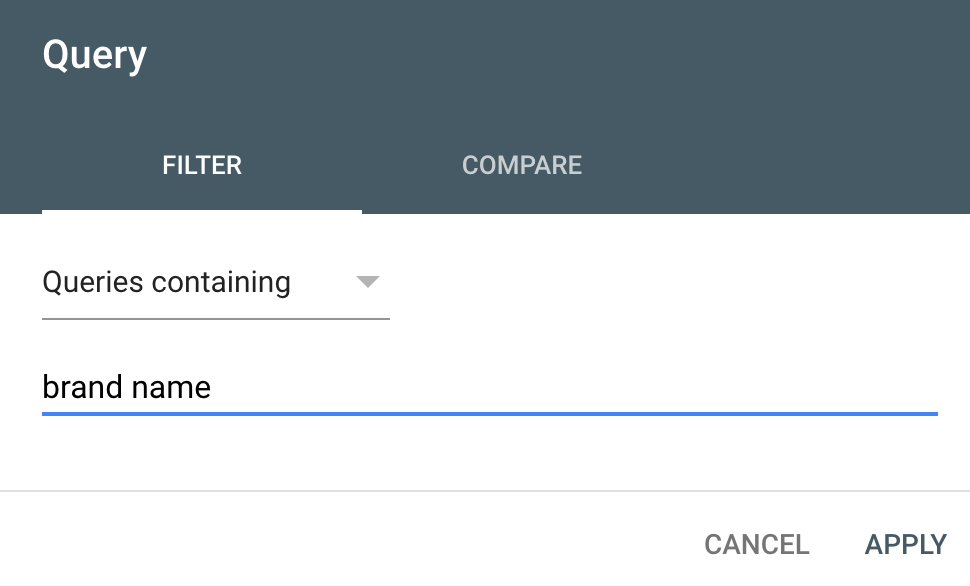
In some cases, you may find people searching for your brand in ways that you can’t include within one "contains" filter. For example, some people shorten Advanced Web Ranking to AWR.
In that case, you’ll want to use GSC’s new regex functionality. Simply change the dropdown to use regex, and then use some simple regex to search for multiple brand name variations.
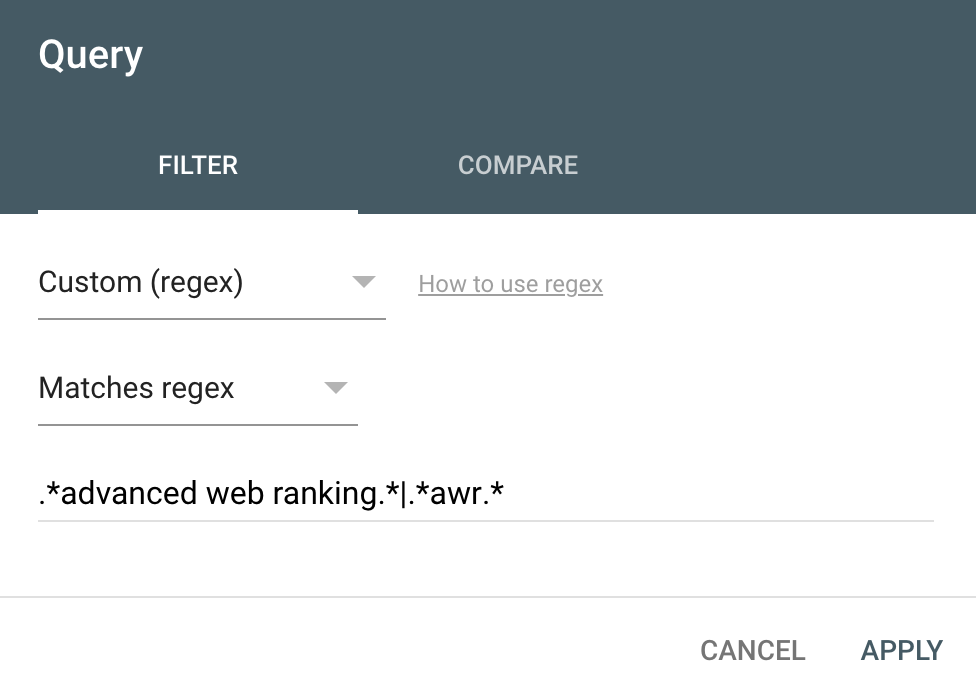
For ease of copying, the rule you’ll want to use will look like this:
.*advanced web ranking.*|.*awr.*
The ".*" means "contains" and the "|" means OR. That means you could add more brand name variations simply by appending another | alongside the phrase you want to match wrapped in ".*".
In the above example, we’ve chosen "Matches regex." This will show just branded traffic. If you want non-brand, simply change the dropdown to use "Doesn’t match regex."
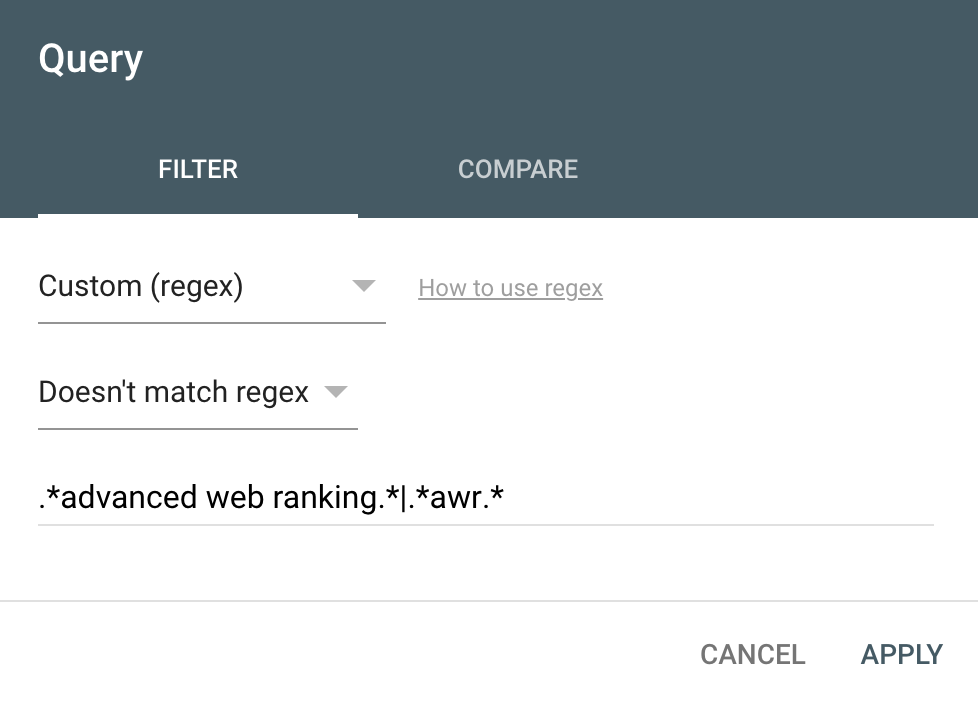
Organic CTR refers to the percentage of users who click on a search result after seeing it.
A quick example: "Blue denim jeans" is searched for 1000 times a month. Your CTR for this term is 20%. This means out of those 1000 impressions, you’re getting 200 clicks from search.
While this is a softer KPI than other more important ones like sessions, it’s still apparent why it’s crucial. Higher CTR results in more sessions, positively impacting hard KPIs, like conversions and revenue.
CTR is also a valuable metric to validate that changes to the appearance of your listings in SERPs positively impact traffic, such as when acquiring rich snippets or updating meta descriptions/title tags.
GSC is the place to go for organic CTR data. The performance report includes sitewide organic CTR within a scorecard at the top.

What’s important to understand with CTR is looking at it from a sitewide perspective isn’t necessarily that useful. You could rank for a high-impression keyword that isn't relevant to your site.
For example, your site could rank in the last position of the first page for a competitor's brand name. The searcher's intent is to find the competitor's site, so you're likely to have a low CTR for that term, even if you have done a great job overall on organic SEO.
This screenshot shows a massive number of impressions and very few clicks for brand queries for competitors (you'll need to trust us on this one since we need to blur out the actual queries).
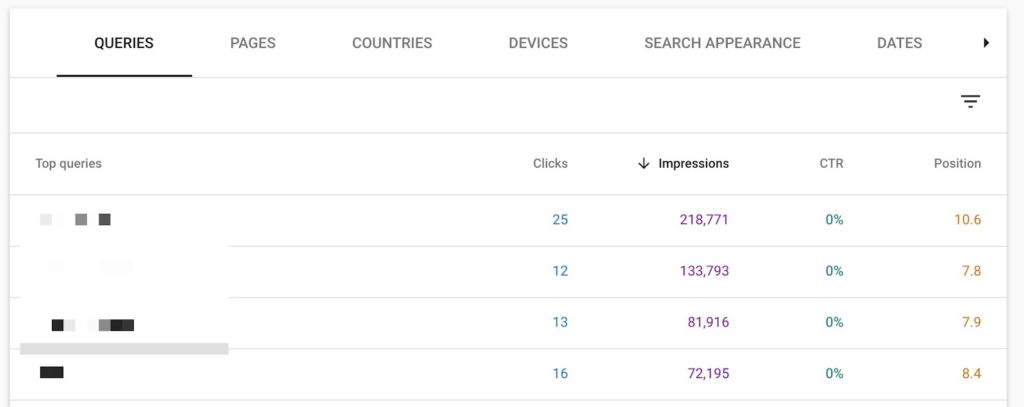
You can see many impressions, but with a CTR of 0%. The result is that the CTR for this site is extremely low.

That means that CTR is often only a useful KPI when looking at it across keywords that are important to you.
Here's the same site, but sorting by clicks received. The CTR and position are much improved over the previous report.
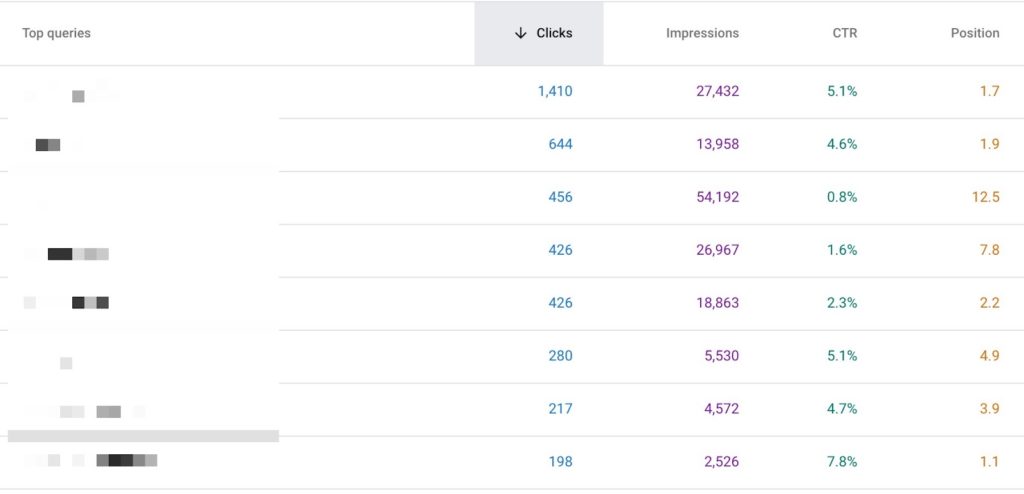
Choosing the queries that are important to you also isn’t always simple. Search query, and therefore CTR data, can’t be matched up with revenue or conversion rate data from Google Analytics. So how do you pick the queries to monitor that will help with revenue KPIs?
One way is to decide based upon user intent. For example, "buy blue jeans" will likely help you hit your revenue KPIs more than "history of jeans." Alternatively, you can also use tools like Keyword Hero that match up GSC and GA data to estimate revenue by search query, making deciding the best queries to monitor easier.
You may want to have reports for individual important keywords or pages to make CTR more meaningful.
As an example, you may want a track CTR separately for brand queries as these tend to have a significantly higher CTR. Here’s an example:
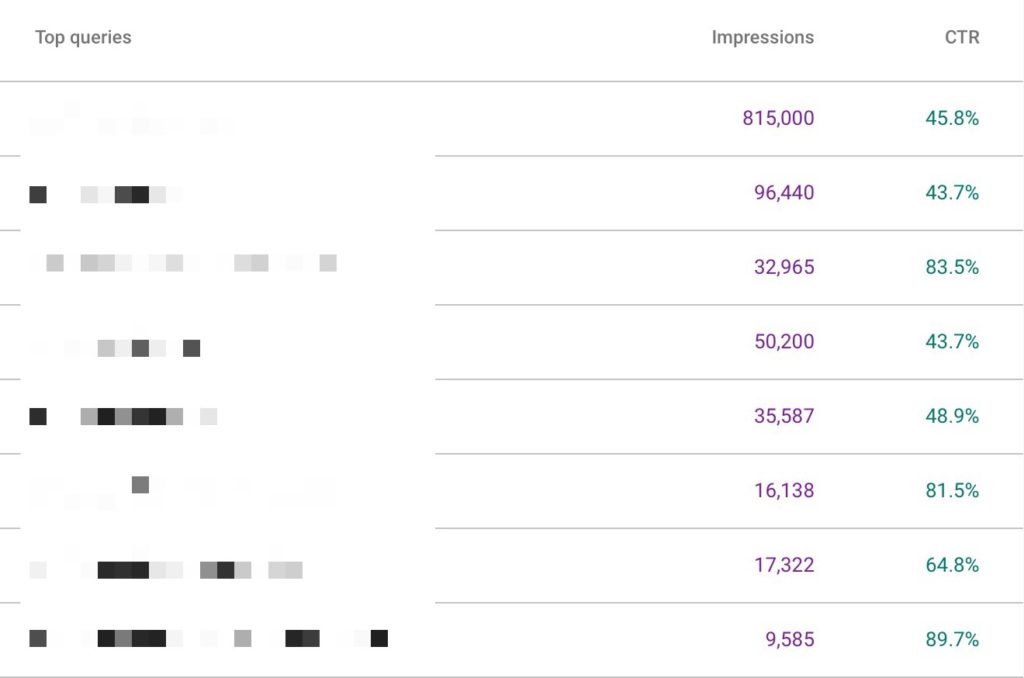
The rankings of your primary keywords play an essential role in how your audience is finding you. If you’re targeting and ranking for the right keywords, this should have a secondary impact on sessions and revenue.
So while rankings definitely shouldn’t be a hard KPI, they are one that you should be measuring, especially if a client has a valid vanity keyword they want to rank for.
If your keywords are hitting the number one position or getting close to it, that’s a big deal and something you’ll want to be sharing with a client.
In addition, rankings are a brilliant soft KPI as they’re a precursor to getting traffic and conversions. You’ll see rankings improve much before you start getting traffic, making them a great thing to show clients that progress is happening.
To track rankings, you’ll want to invest in a rank tracker to check keywords daily, weekly, or monthly automatically.
After signing up, you can do this easily within Advanced Web Ranking by setting up a project.
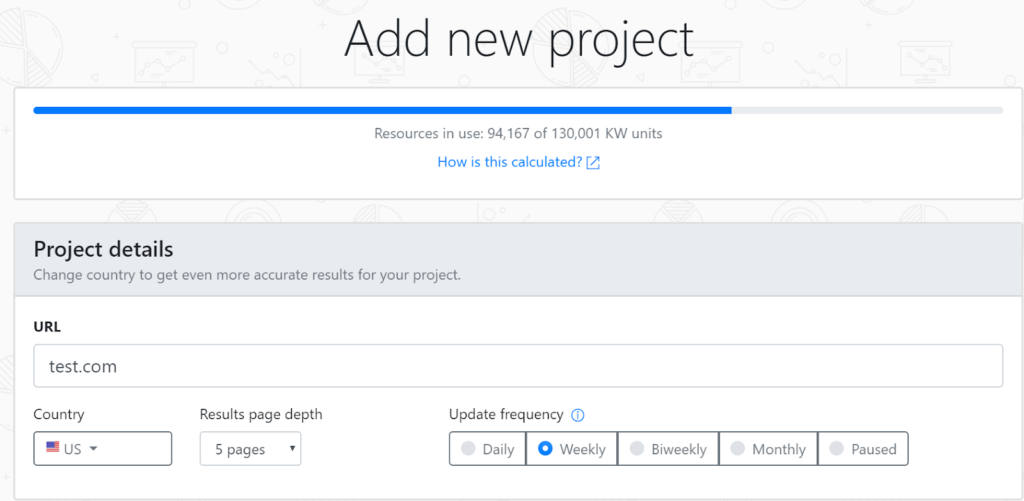
Next, add the keywords you want to track.
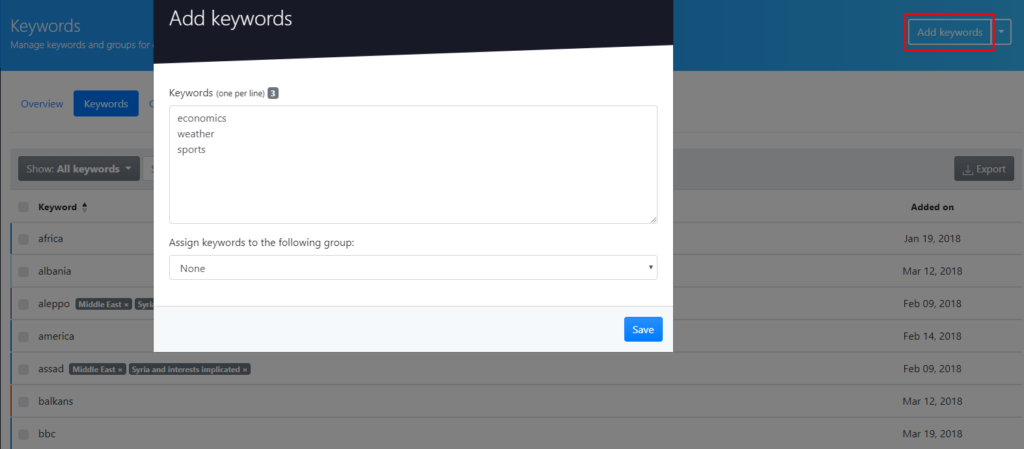
Once you’ve set them up, the tool provides you with reports showing you the current trend for each keyword.
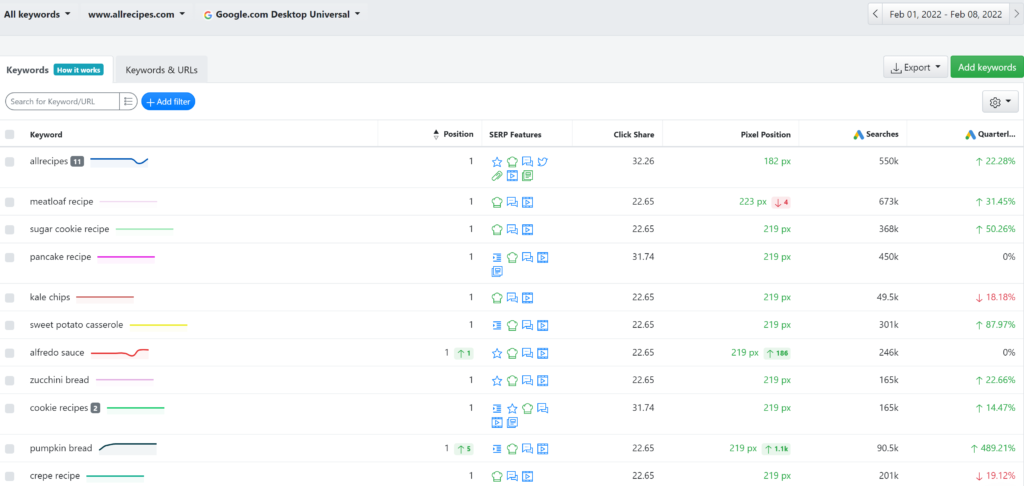
Other top-level reports include the percentage of keywords you have in different position ranges, with the summary for top keywords, urls and groups.
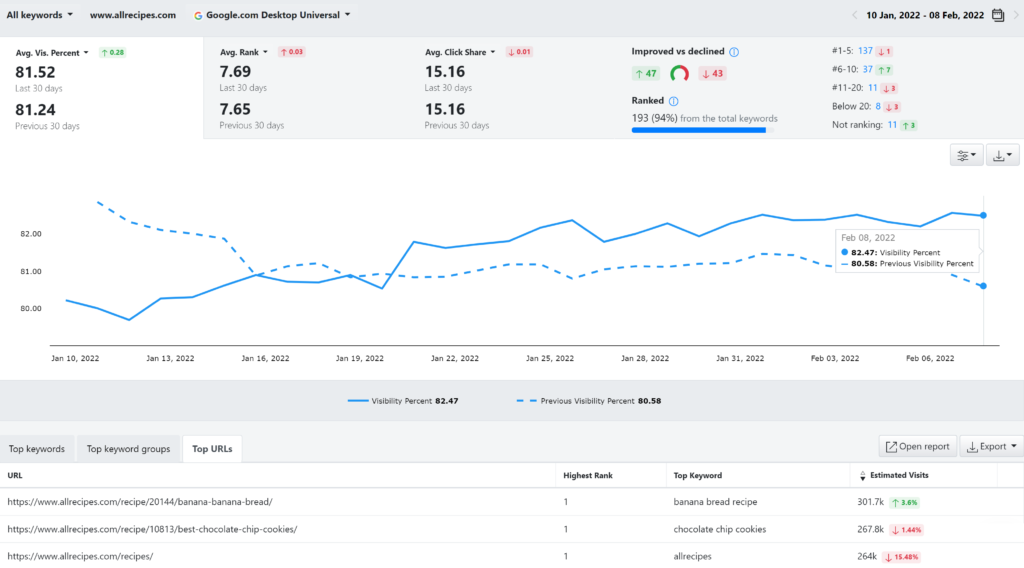
As well as which SERP features you’re capturing, which, again, can be helpful if capturing rich results is essential to your SEO strategy or client.
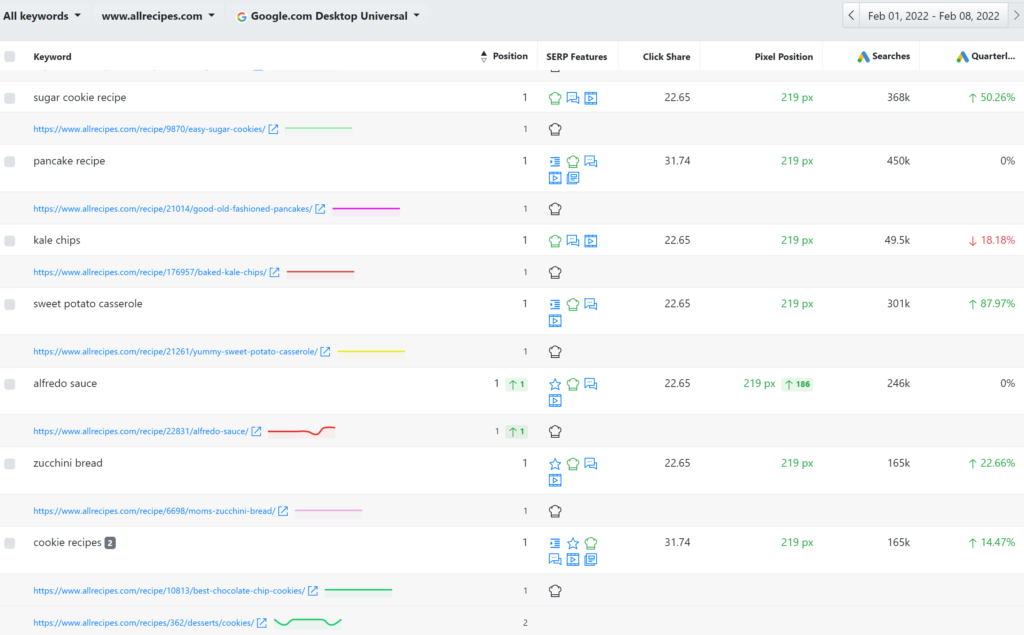
Backlinks have a huge role in how Google ranks your site. However, not every link is beneficial, making them a difficult KPI to measure. If you count backlinks as a metric without excluding spammy ones, it won’t always be a positive indicator of potential performance improvements since Google will simply devalue them.
Monitoring backlinks as a KPI can work if building links is something you’re proactively trying to begin for a client.
You can use multiple tools to track backlinks; a couple of my favorites are Majestic and Ahrefs.
They both work in similar ways; simply enter your URL, and the tools will show both the number of individual backlinks and referring domains you have on your site.

You can then use this data to share important link metrics with clients and display the links you’ve helped acquire in an SEO report like with our template.
While hard and soft KPIs are the more client-facing metrics you’ll be reporting, it’s also essential to set KPIs to monitor how the site works from a technical perspective.
Technical KPIs give a good indication of how good a job you’re doing getting the site to cover fundamentals that can negatively affect performance if not correctly implemented.
Here are a few easy-to-monitor KPIs to track your technical success.
Coverage issues refer to issues Google reports in GSC; they provide insights into problems found while Google crawls and indexes your site.
There are four different categories that each URL will be grouped by:
The aim, of course, is to get to as few error reports as possible, with none being the ultimate goal.
Alongside error reports, other indicators you can use include the number of URLs indexed that shouldn’t be. The only catch, to easily see this number, you’ll need to have accurate XML sitemaps uploaded.
To see this, head over to the Valid section of the coverage report and view the table below.

A large number of URLs indexed but not submitted can only mean one of two things:
One fundamental of technical SEO is quality indexing — only allowing Google to index unique and valuable pages for search.
If Google is indexing URLs they shouldn’t be, this can open you up to many issues, including being negatively impacted by algorithm updates.
We all know how important a good UX is for SEO, especially since the page experience algorithm update. Just before this update, Google added a helpful page experience report to Google Search Console, making your sitewide experience much easier to track.
The report makes it easy to identify pages labeled as having a "good user experience," evaluating each URL instead of the site as a whole.
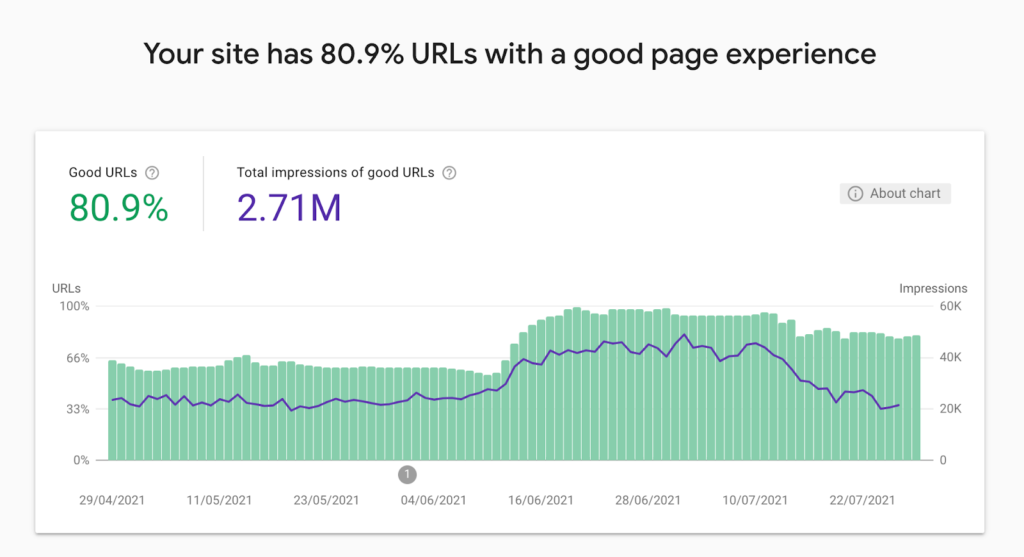
Five factors are analyzed and summarized within the report:
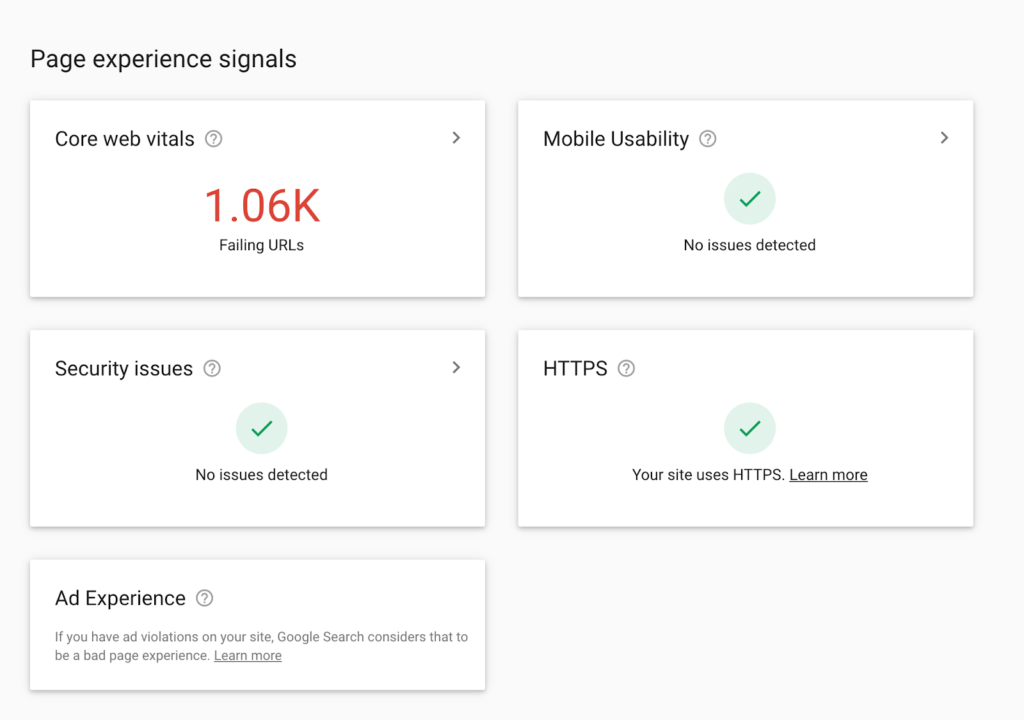
While the report doesn’t advise how to fix issues, it’s still a valuable indicator of how well user-experience-related metrics are doing across the site.
Currently, this report is only available for mobile browsers, not desktops, although this may change for Google’s page experience update for desktop in February 2022.
Most third-party site auditors provide health scores; they’re helpful to understand the severity of the technical issues found on a site at a glance.
My favorite tool that provides health scores is Sitebulb.

After running a crawl, you’ll get an easy-to-digest summary on the overview page.
In addition, the tool provides a series of "hints" as to what is causing the score not to be a perfect 100.
A word of caution: while these health scores are indeed helpful as an indicator, do not rely on them entirely to represent a site's technical SEO. There are many technical factors that a tool cannot estimate, requiring human input.
The list of potential KPIs is endless, but tracking dozens of KPIs will take too much of your time that you could be spending on SEO activity that benefits your clients.
Instead, select a smaller amount that will allow you to remain focused.
KPIs show how the site is performing, but they can also be a strong indicator of how you are progressing as an SEO.
Got a question on SEO KPIs? Tweet me and/or check out this SEO analytics guide for further reading on this topic.